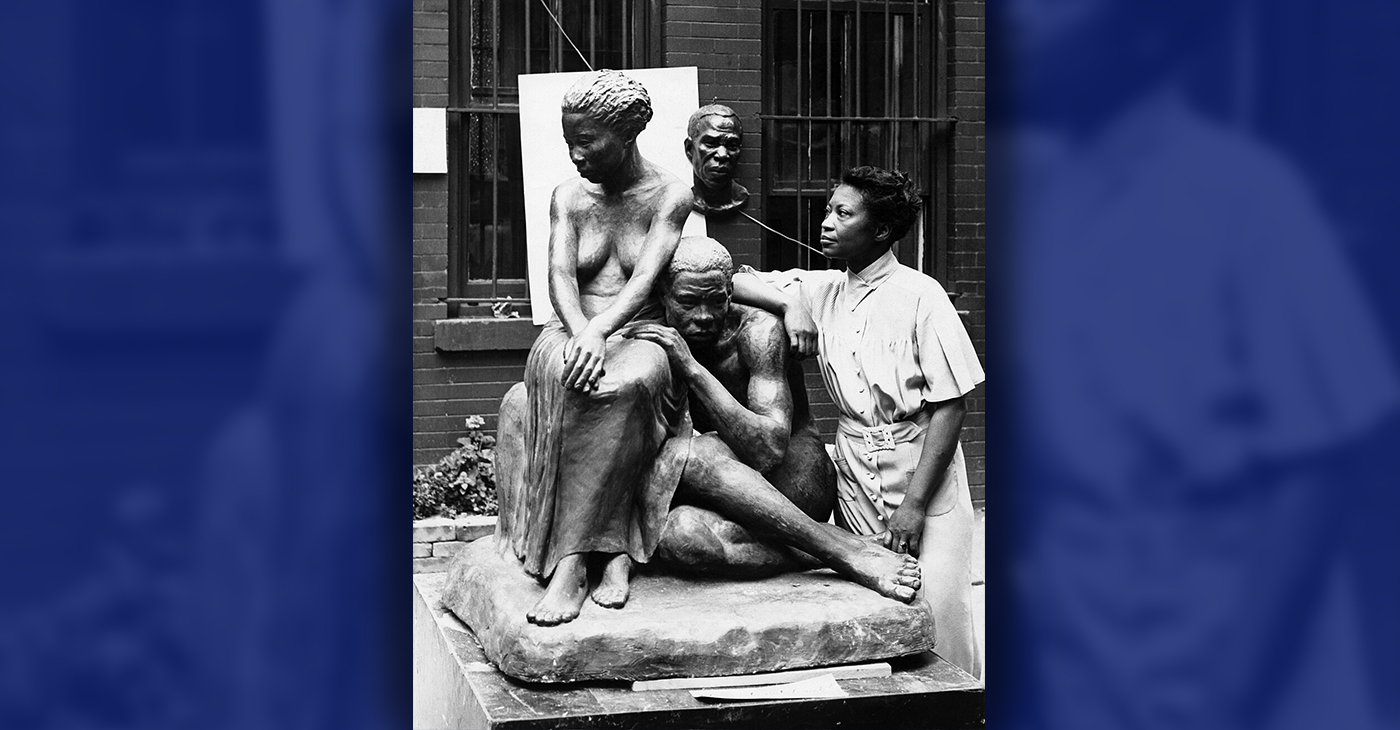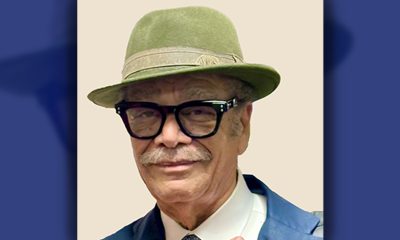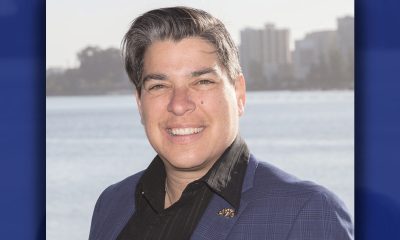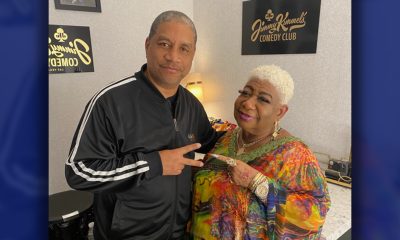Art
Forgeries of African American Art on the Rise
NNPA NEWSWIRE — Today, the recent boom in museums has revealed a devotion to African-American artists and the increasing amount of attention paid to these artists has led to a significant rise in forgeries, according to a new report.
By Stacy M. Brown, NNPA Newswire Correspondent
@StacyBrownMedia
For African American artists, prior to 1980, exhibition venues were few, museum opportunities rare and there wasn’t concrete infrastructure for Black art.
“Before that time, the primary infrastructure for African American art lay in the hands of academia,” said Larry “Poncho” Brown, one of Maryland’s most prolific artists.
Brown noted that such talented individuals as Charles White, Elizabeth Catlett, Jacob Lawrence, Romare Bearden and others stood above the industry prior to the 1980s while the Harlem Renaissance, AfriCOBRA, and other black art movements were the last of the noted revolutions in African American art.
Today, the recent boom in museums has revealed a devotion to African-American artists and the increasing amount of attention paid to these artists has led to a significant rise in forgeries, according to a new report.
The ART Newspaper reported that, in the past few weeks alone, there have been many fakes purporting to be the work of Alma Thomas, Beauford Delaney, Charles White, Romare Bearden and Bob Thompson.
“It’s a whole generation: you could go from A to Z through the list, from Charles Alston to Charles White. I am seeing fakes attributed to all of them,” New York-based gallerist Rosenfeld told the newspaper.
Propelling the fakes market is the fact that many of these artists were overlooked or undervalued in their lifetimes, so scholarship and expertise in their work is limited. “You simply can’t go back to the source any more, and there is only a handful of people who worked first-hand with a lot of these artists while they were alive,” Rosenfield said.
“Forgers know they can capitalize on that.”
For artist Jonathan Green, who owns the popular Jonathan Green Studios in Charleston, S.C., forgeries are of little surprise. “In my 40-year career, I’ve run into more fraud than you can shake a stick at,” Green said. “Fraud has been around since the beginning of time.”
Because African American artists are now appreciated, there’s a high-value placed on their work and that keeps the fraudsters working overtime, Green said. Also, because black artists have historically been overlooked, so-called art experts are ignorant to many great originals, he said.
“A lot of people are capitalizing on this and, in some cases, the fault lies with the museums and the cultural centers because they’re not sophisticated enough to know about these artists,” Green said.
Additionally, as noted in The ART, some of the artists whose works are being forged, like Jacob Lawrence, have estates and foundations which should make it easier to authenticate the works.
However, foundations just aren’t doing this work anymore because they can’t afford to, said Bridget Moore of New York’s DC Moore gallery, which represents African-American artists including David Driskell, and Lawrence. For this reason, Moore says she has always kept detailed “fake files” on all of her artists.
Some of the recent forgeries include a 2011 case where Louisiana artist William Toye and his wife, Berry, pleaded guilty to charges of fraud after conspiring with a New Orleans-based dealer over the course of nearly 40 years to sell dozens of works painted by Toye and fraudulently signed as Clementine Hunter, an African-American artist who died in 1988. Hunter was self-taught and arguably one of the most significant artists to come out of Louisiana, according to the FBI special agent Randy Deaton, who led the three-year-long investigation.
“It was a remarkable case because she was a folk artist,” Deaton told The ART. “She was well known, but there wasn’t an authoritative archive on her career,” which made it easier for Toye to pass off his own paintings as hers.
One of the things that gave away the forgeries was the presence of cat hairs on some canvases, the conservator and forgery specialist James Martin, who consulted on the case, told the newspaper.
Currently the director of scientific research at Sotheby’s, Martin is the founder of Orion Analytical, which was acquired by the auction house in 2016.
“Cat hairs, the same discrepancies in under-drawing and signatures, and dirt wiped on to [the works] to impart a false appearance of age linked the fakes I examined to a common source,” he said.
Ultimately though, it was the sheer number of forged works attributed to Hunter by the Toyes that gave Martin a substantial sample size, enabling him to find the forgeries. “Generally speaking, problems with forgeries become easier to spot when seen in large numbers,” he said.
Concerns about the authenticity of several works by Charles White were raised when the Art Institute of Chicago was organizing the artist’s first major survey show, according The ART.
The exhibition, seen in Chicago last summer, is currently at the Museum of Modern Art in New York and is due to travel to the Los Angeles County Museum of Art next month.
According to FBI special agent Timothy Carpenter, who manages the agency’s art crimes division, “it’s not the first time this issue has come up,” but he adds that the fake works that are surfacing are likely to be small or not of very high value, which may make dealers disinclined to formally report them.
Art
A Prolific Painter: Artist and Advocate Lois Mailou Jones
Lois Mailou Jones was a prominent African American artist whose career spanned more than seven decades, from the Harlem Renaissance to the modern art movement. She was not only a prolific painter but also an influential educator, bridging cultural gaps and challenging stereotypes through her vibrant and diverse works.

By Tamara Shiloh
Lois Mailou Jones was a prominent African American artist whose career spanned more than seven decades, from the Harlem Renaissance to the modern art movement. She was not only a prolific painter but also an influential educator, bridging cultural gaps and challenging stereotypes through her vibrant and diverse works.
Her unique journey of self-expression, dedication to art, and advocacy for African American and African themes made her a crucial figure in the evolution of American art.
Jones was born on Nov. 3, 1905, in Boston. Raised in an intellectual and supportive family, she demonstrated an early interest in art, encouraged by her mother, who believed in the importance of creativity. Lois studied at the School of the Museum of Fine Arts, Boston, where she faced racial challenges but persisted in pursuing her passion.
Her pursuit of higher education led her to the prestigious Design Art School, where she perfected her skills in textile design. Later, Jones attended Harvard University and received further training at the Académie Julian in Paris. This European experience greatly influenced her style and broadened her perspective on art.
Jones’s career began in textile design, creating works that were used by leading textile companies. However, her true passion was painting. During the Harlem Renaissance, she moved away from textile design to focus on fine art, exploring themes that reflected her heritage and the African diaspora.
Her early works were influenced by European Post-Impressionism, featuring landscapes and still life, but Jones’s style evolved over time. After spending time in Haiti, she was deeply inspired by Caribbean culture, and her palette became more vivid, her subject matter more symbolic. The influence of African and Caribbean culture is evident in her later works, where she used bright colors and geometric patterns to convey the spirit and stories of the people she encountered.
Her contributions to African American art were significant during a time when Black artists struggled for recognition. She often focused on themes of African heritage, pride, and unity, blending African illustrations and portraits with Western artistic techniques to create a unique visual language that celebrated Black culture.
She was also a dedicated educator. She began her teaching career at Palmer Memorial Institute in North Carolina and later became a professor at Howard University in Washington, D.C., where she taught for almost 50 years. Through her teaching, she influenced generations of young Black artists, encouraging them to explore and express their cultural heritage through art.
In the 1930s and 1940s, she worked to exhibit her work alongside other Black artists, helping to create a platform for voices that had long been excluded from mainstream galleries.
Recognition and Legacy
Jones achieved significant recognition throughout her lifetime, both in the United States and internationally. She exhibited her work across the globe, including in Paris, Africa, and the Caribbean.
Jones continued painting until her death in 1998, leaving behind a rich legacy of artistic achievements and contributions to art education. She broke boundaries by celebrating Black identity and heritage at a time when these themes were often marginalized.
Art
At Oakland Symphony’s 2024-25 Season Opening, Music Director Kedrick Armstrong Will Make History
Music Director Kedrick Armstrong will make history with his debut performance at the Oakland Symphony’s 2024-25 Season Opening Concert on Oct. 18, at 8 p.m. at the Paramount Theatre in Oakland. Armstrong, who is from Georgetown, South Carolina, is the ninth music director in the organization’s almost 100-year-history. His appointment follows in the footsteps of the late Oakland Symphony Music Director and Conductor Michael Morgan.

By Oakland Post Staff
Music Director Kedrick Armstrong will make history with his debut performance at the Oakland Symphony’s 2024-25 Season Opening Concert on Oct. 18, at 8 p.m. at the Paramount Theatre in Oakland.
Armstrong, who is from Georgetown, South Carolina, is the ninth music director in the organization’s almost 100-year-history. His appointment follows in the footsteps of the late Oakland Symphony Music Director and Conductor Michael Morgan.
Armstrong, 30, is not a new face to Oakland as he has been an active partner with the Oakland Symphony over the last few years both on and off-the-stage.
From 2022-24, Armstrong led three Oakland Symphony programs and guest-conducted the orchestra, showcasing his broad knowledge of the classical repertoire and enthusiasm for spotlighting diverse voices.
On his Oakland Symphony subscription debut on Feb. 16, Kedrick led the World Premiere of “Here I Stand: Paul Robeson,” an oratorio by Carlos Simon on a libretto by Dan Harder, commissioned by the Oakland Symphony.
On April 16, 2023, Armstrong conducted the Oakland Symphony’s Family Hype concert, presented in partnership with Ronald McDonald House Charities of the Bay Area. Armstrong first led the orchestra for a free “Summerstage at City Hall” concert at Oakland City Hall on Aug. 4, 2022.
The music program “Kedrick Armstrong Inaugural Inextinguishable Oakland!” will include commissioned works from master drummer Allison Miller and Bay Area artists – Ethiopian artist Meklit and Latin percussionist John Santos – in celebration of Living Jazz’s 40th anniversary.
Oct. 18 musical program:
Julia Perry: A Short Piece for Orchestra
Celebrate the 40-Year Anniversary of Living Jazz with three jazz-rooted compositions.
“Valley of the Giants” (for Eddie Marshall); Allison Miller, composer; arranged and orchestrated by Todd Sickafoose. Featured artist: Allison Miller, Drum Set; guest artist: Dayna Stephens, Saxophone.
Medley: “Ethio Blue, My Gold, Stars in a Wide Field”
Songs and Lyrics by Meklit; arrangement and orchestration by Sam Bevan. Featured artist: Meklit, Vocals; guest artists: Sam Bevan, Bass, Colin Douglas, Drumkit, Marco Peris Coppola, Tupan/Percussion.
“Un Levantamiento (An Uprising)”
Composer, percussion: John Santos; arrangers: Saul Sierra and John Santos. Featured artist: John Santos, güícharo, bongo; guest artists: Pedro Pastrana, Puerto Rican cuatro; Maria Cora, spoken word.
Carl Nielsen: Symphony No. 4, “The Inextinguishable”
Pre-concert talk by John Kendall Bailey begins at 7:05pm.
For tickets, go to: https://oaklandsymphony.my.salesforce-sites.com/ticket/#/events/a0SUu0000001rYXMAY
Art
Augusta Savage: A Sculptor, Activist and Renaissance Woman
Augusta Savage was a prominent sculptor and activist of the Harlem Renaissance, known for her artistic talent and dedication to encouraging and supporting African American artists.

By Tamara Shiloh
Augusta Savage was a prominent sculptor and activist of the Harlem Renaissance, known for her artistic talent and dedication to encouraging and supporting African American artists.
Augusta Christine Fells was born on Feb. 29, 1892, in Green Cove Springs, Fla. She later took the name of her second husband as her
Savage began sculpting as a child using natural clay found near her home. Her father, a Methodist minister, didn’t approve of her sculpting and did whatever he could to stop her. She once said that her father “almost whipped all the art out of me.” Despite her father’s objections, she continued to make sculptures.
When the family moved to West Palm Beach, Fla., in 1915, she encountered a new challenge: a lack of clay. She eventually got some materials from a local potter and created a group of figures that she entered in a local county fair. Her work was well received, winning a prize and along the way the support of the fair’s superintendent, George Graham Currie. He encouraged her to study art despite the racism she encountered.
In the 1920s, Savage moved to New York City, where she attended Cooper Union, a prestigious art school that provided free tuition. She excelled there, completing her studies ahead of time and receiving scholarships for living expenses. Despite being rejected for a summer program in France because of her race, she persevered, using the incident to highlight discrimination. She gained recognition during the Harlem Renaissance, creating sculptures of prominent African Americans, including W. E. B. Du Bois and Marcus Garvey.
In 1929, Savage received a Julius Rosenwald fellowship, which enabled her to study in Paris, where she exhibited her work at the Grand Palais, a famous exhibition hall and museum in the French capital.
When she returned to the U.S. during the Great Depression, Savage turned to teaching and founded the Savage Studio of Arts and Crafts, mentoring young artists like Jacob Lawrence and Norman Lewis. She played an active role in the Harlem Artists’ Guild and worked with the Works Projects Administration (WPA) to support struggling artists.
One of Savage’s most celebrated works was The Harp, created for the 1939 New York World’s Fair. Inspired by James Weldon Johnson’s poem “Lift Every Voice and Sing,” the monumental sculpture depicted twelve African American youth as the strings of a harp. Although it was highly acclaimed, The Harp was destroyed after the fair ended.
In her later years, Savage retreated to a quieter life in Saugerties, New York, teaching children and creating art as a hobby. She was married three times and had one child, Irene.
Savage passed away on March 26, 1962, in New York City after battling cancer. Although she was nearly forgotten at the time of her death, today Savage is recognized as a pioneering artist, educator, and advocate for African American art and artists.
-

 Alameda County5 days ago
Alameda County5 days agoAlameda County District Attorney Pamela Price Announces $7.5 Million Settlement Agreement with Walmart
-

 Activism3 weeks ago
Activism3 weeks agoCOMMENTARY: DA Price Has Done Nothing Wrong; Oppose Her Recall
-

 Activism2 weeks ago
Activism2 weeks agoOP-ED: Hydrogen’s Promise a Path to Cleaner Air and Jobs for Oakland
-

 Activism3 weeks ago
Activism3 weeks agoBarbara Lee, Other Leaders, Urge Voters to Say ‘No’ to Recalls of D.A. Pamela Price, Mayor Sheng Thao
-

 Activism3 weeks ago
Activism3 weeks agoOakland Post: Week of October 9 – 15, 2024
-

 Community2 weeks ago
Community2 weeks agoTerry T. Backs Oakland Comedy Residency by Oakland’s Luenell at Jimmy Kimmel’s Comedy Club in Las Vegas
-

 Business2 weeks ago
Business2 weeks agoStudy Confirms California’s $20/Hour Fast Food Wage Raises Pay Without Job Losses
-

 Activism3 weeks ago
Activism3 weeks agoSurge of Support for Vote ‘No’ on Recall of Mayor Sheng Thao































































